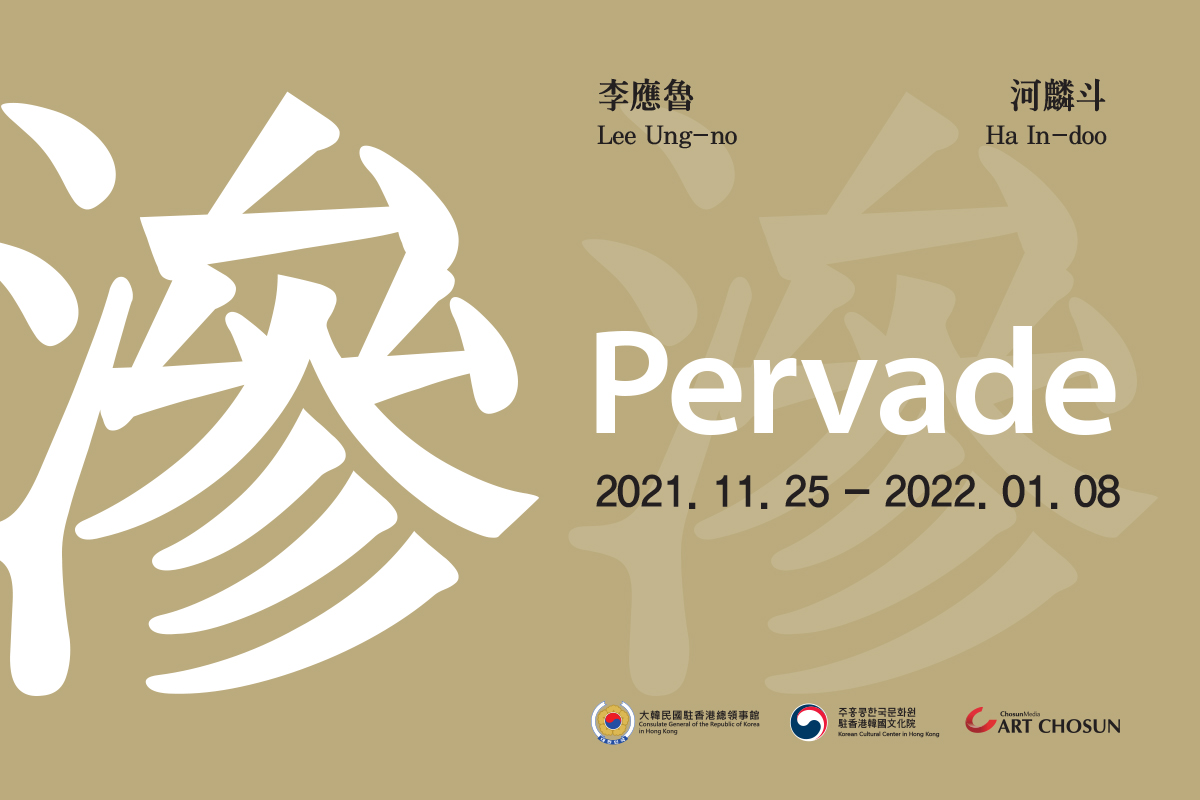Shows
Korean Cultural Center & Art Chosun Present Lee Ung-no & Ha In-doo in “滲: Pervade”

*This is a sponsored post.

“滲: Pervade,” a duo exhibition featuring the works of Korean modern art masters Lee Ung-no and Ha In-doo, will be on view at the Korean Cultural Center in Hong Kong from November 25 to January 8, 2022. Jointly presented by the Korean Cultural Center in Hong Kong and Art Chosun, the exhibition comprises 11 masterpieces created by either Lee or Ha, whose names have become synonymous with the first generation of Korean modern art.
The title of the exhibition reflects how the artistic ideologies of these artists—both masters of their craft who sought to express Korean beauty while evolving traditional techniques—pervade the canvas. Lee transcended the barriers of Eastern and Western art with his modern and abstract depictions of nature and humans, while Ha’s geometric color fields have roots that can be traced back to traditional Korean culture and Buddhism. The interpretation of “滲: Pervade” goes further in embracing the hope that the artists’ sentiments will permeate the hearts and minds of all who view and appreciate their works.
Lee Ung-no
Born in Hongseong, Chungcheongnam-do, in 1904, Lee was a prolific figure in Korean modern and contemporary art. He first gained attention when his work Cheongjook (c. 1924) was selected for the 3rd Joseon Art Exhibition in 1924. Though he began his career as a literati painter, Lee learned new approaches to landscape painting while studying in Japan from the late 1930s to early 1940s. In 1958, he moved to France and began merging European and East Asian artistic philosophies into his work and developing his original style, embodied by his Munjachusang (Abstract Letter) (1970s) and Gunsang (People) (1980s) series. Lee founded the Academy of Oriental Painting in the Musée Cernuschi in Paris in 1964. His works have been presented in exhibitions in Germany, the United Kingdom, Italy, Denmark, Belgium, and the United States.
Ha In-doo
Born in Changnyeong, Gyeongsangnam-do, in 1930, Ha In-doo was part of the first generation of university graduates after Korea regained its independence. As a founding member of Actuel (previously Korea’s Modern Artists’ Association) with contemporaries including Kim Tschang-Yeul and Park Seo-bo, Ha avidly took part in the Art Informel movement until 1962, during which he produced geometric color field abstract works. From the mid-1970s, he broke away from geometric structures and adapted fluid curves and expanding symbols to reflect his deep appreciation for Buddhist concepts, represented by the Milmun (1978) and Mandala (1977–78) series. Ha’s practice also borrows elements from Dancheong or traditional Korean decorative patterns as well as shamanic paintings. His works are recognized for their use of decorative colors and their embodiment of the philosophical concepts of creation and diffusion.
About Korean Cultural Center in Hong Kong
The Korean Cultural Centers across the globe are outposts that promote Korean culture to local residents through a variety of special programs. Korean Cultural Center in Hong Kong, located at PMQ, was established in January 2018 as the 32nd Korean Cultural Center worldwide. It has provided opportunities for Hong Kong to embrace Korean culture through events such as Festive Korea, an annual mega-festival, alongside art exhibitions, performances, Korean-language classes, and other workshops.
“滲: Pervade” will be on view at the Korean Cultural Center in Hong Kong, from November 25 to January 8, 2022.
For more details, visit hk.korean-culture.org.







